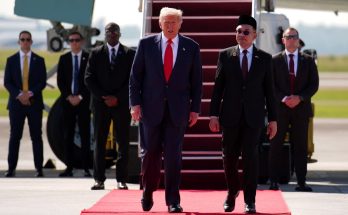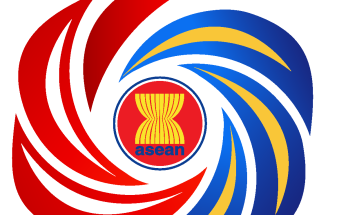 India is … chai, cricket and creativity.
India is … chai, cricket and creativity.
India is … mystical, magical and maddening.
India is … innovative, interesting and incredible.
One could go on and on. Perhaps no country in the world lends itself so easily to an effortless proliferation of adjectives as this Asian country of 1.2 billion-plus people, with her surging dreams and incandescent hopes. It may sound a tad exaggerated, but one may well say that to speak of India in an authentic sense, one needs a separate grammar, vocabulary, and maybe even a new alphabet. And what better way to ignite a fresh conversation about an ancient country rapidly transitioning to modernity than through a themed contest, goading and coaxing people to unleash their version of India through images and films?
The Idea of India
 The governments the world over are not particularly known for virile imagination, but the public diplomacy division of India’s external affairs ministry (MEA) has found a perfect platform to launch an inspired dialogue on India. Eponymously named, the ‘India is,’ web-based campaign seeks to engage people from all over the world in a conversation about their idea of India. The multi-media digital contest has now entered its third year, generating a mélange of stunning visuals. Once again, we see a creative transfiguration of the spirit of India through photographs and short films. And going by an overwhelming response, the contest has been fairly successful.
The governments the world over are not particularly known for virile imagination, but the public diplomacy division of India’s external affairs ministry (MEA) has found a perfect platform to launch an inspired dialogue on India. Eponymously named, the ‘India is,’ web-based campaign seeks to engage people from all over the world in a conversation about their idea of India. The multi-media digital contest has now entered its third year, generating a mélange of stunning visuals. Once again, we see a creative transfiguration of the spirit of India through photographs and short films. And going by an overwhelming response, the contest has been fairly successful.
 The enthusiasm was sincere and palpable at the Taj Mahal hotel in Lutyen’s Delhi, (June 4), where the city’s elite, diplomats and creative spirits turned out in large numbers to fete the winners of a short film contest called “India is … a visual journey.” The five short films produced by ace film director Anurag Kashyap portray India in all its exuberant diversity and contradictions. The films have been commissioned by YouTube in a joint initiative with India’s Ministry of External Affairs. “With these five films we are confident that we will be able to inspire more Indians to come forward and participate in this initiative and help us to build the India Brand further globally,” says Riva Das Ganguly, joint secretary in charge of the Public Diplomacy division in the MEA.
The enthusiasm was sincere and palpable at the Taj Mahal hotel in Lutyen’s Delhi, (June 4), where the city’s elite, diplomats and creative spirits turned out in large numbers to fete the winners of a short film contest called “India is … a visual journey.” The five short films produced by ace film director Anurag Kashyap portray India in all its exuberant diversity and contradictions. The films have been commissioned by YouTube in a joint initiative with India’s Ministry of External Affairs. “With these five films we are confident that we will be able to inspire more Indians to come forward and participate in this initiative and help us to build the India Brand further globally,” says Riva Das Ganguly, joint secretary in charge of the Public Diplomacy division in the MEA.
Soft Power Mystique
Amid the celebratory chatter, it may have escaped notice that the venue of the ‘India is’ party was Diwan-e-Am hall in the Taj hotel. History buffs will recall that the Mughal emperors used to hold public audience in such Diwan-a-aams. In a sense, Akbar was among the first practitioners of what we now know as public diplomacy. Public diplomacy is about taking diplomacy beyond governments and businesses and connecting it to ordinary people. “Our mandate is to go beyond government, businesses and media. Public diplomacy is people-driven. The initiative aims to engage people with the country’s foreign policy initiatives,” says Pinak Chakravarthy, special secretary in charge of public diplomacy in the external affairs ministry.
 Diplomatic protocol and alcohol apart, what endured in memory was the beaming face of a young Indian filmmaker who has defied cancer (and is heading for a second round of chemotherapy) to make a riveting short film that revolves around the ubiquitous ‘Chai’ (tea), evoking the indomitable spirit of India. Another eye-catching film is “Hidden Cricket,” an unabashed celebration of how the madness, mania and magic of cricket permeate the lives of millions of Indians. “Geek Out” dramatizes the dual lives of Indian netizens who are living out the highs and lows of their lives in an endless expanse of cyber space. The sheer diversity of themes encapsulated in these films marks young India’s arrival on the global stage with a distinctive voice and identity. India is … after all, a celebration of the youth of India, according to India’s foreign minister Salman Khurshid, also a playwright. The challenge, he says, is to balance an ancient country with the emerging aspirations, ideas and dreams of the youth. “We are on the cusp of change … keep the windows open. This is global democracy at its best,” he says.
Diplomatic protocol and alcohol apart, what endured in memory was the beaming face of a young Indian filmmaker who has defied cancer (and is heading for a second round of chemotherapy) to make a riveting short film that revolves around the ubiquitous ‘Chai’ (tea), evoking the indomitable spirit of India. Another eye-catching film is “Hidden Cricket,” an unabashed celebration of how the madness, mania and magic of cricket permeate the lives of millions of Indians. “Geek Out” dramatizes the dual lives of Indian netizens who are living out the highs and lows of their lives in an endless expanse of cyber space. The sheer diversity of themes encapsulated in these films marks young India’s arrival on the global stage with a distinctive voice and identity. India is … after all, a celebration of the youth of India, according to India’s foreign minister Salman Khurshid, also a playwright. The challenge, he says, is to balance an ancient country with the emerging aspirations, ideas and dreams of the youth. “We are on the cusp of change … keep the windows open. This is global democracy at its best,” he says.
India is…
 Cyber space, with its multifarious tools of promotion and image-building, has opened up new possibilities of projecting the country’s soft power. And as India scripts its own anthem of renaissance and renews its pitch for a permanent seat in the UN Security Council, this soft power will come in handy. There are many good reasons for getting India inside the tent, but no argument is more compelling than the fact that India is. Philosophising can’t go on endlessly; so “India is… is a wonderful way of saying that India is and nothing more needs to be added to it,” as the foreign minister of India says. And you don’t need the buzz of alcohol to imagine incandescent visions of India; chai will do. For, India is … there you go again.
Cyber space, with its multifarious tools of promotion and image-building, has opened up new possibilities of projecting the country’s soft power. And as India scripts its own anthem of renaissance and renews its pitch for a permanent seat in the UN Security Council, this soft power will come in handy. There are many good reasons for getting India inside the tent, but no argument is more compelling than the fact that India is. Philosophising can’t go on endlessly; so “India is… is a wonderful way of saying that India is and nothing more needs to be added to it,” as the foreign minister of India says. And you don’t need the buzz of alcohol to imagine incandescent visions of India; chai will do. For, India is … there you go again.
(Manish Chand is Editor-in-Chief of India Writes, an online magazine and journal focused on international relations, the India Story and emerging powers.)
Author Profile

- Manish Chand is Founder and Editor-in-Chief of India Writes Network (www.indiawrites.org) and India and World, a pioneering magazine focused on international affairs. He is CEO, Centre for Global India Insights, an India-based think tank focused on global affairs.
Latest entries
 India and the WorldOctober 27, 2025Modi hails the century of India and ASEAN, backs ASEAN centrality
India and the WorldOctober 27, 2025Modi hails the century of India and ASEAN, backs ASEAN centrality India and the WorldOctober 26, 2025Act East: Five reasons why ASEAN summit in Malaysia matters
India and the WorldOctober 26, 2025Act East: Five reasons why ASEAN summit in Malaysia matters India and the WorldOctober 25, 2025Malaysia Summit: India can play a bigger role in ASEAN: Anil Wadhwa
India and the WorldOctober 25, 2025Malaysia Summit: India can play a bigger role in ASEAN: Anil Wadhwa India and the WorldOctober 2, 2025With US frowning, India to host Putin in December
India and the WorldOctober 2, 2025With US frowning, India to host Putin in December







